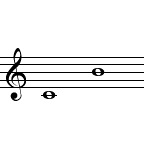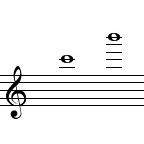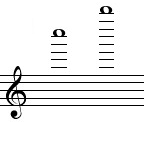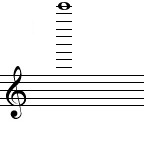Octaves
Octave designations are necessary to correctly identfy every possible note from the lowest to highest pitches. Unfortunately, there is no one standard system in place today that musicians use to designate octaves. As this table shows, there are several systems and often, several verisions within each system. It is for this reason that the professional musician needs to understand all of these systems. The common reference point that can be used to make sense of all of these systems is the designation for Middle C. Once you know where Middle C is in the system, everything else can be easily determined.
Early Octave Designation System
The first system was created by Guido d'Arezzo in the 11th century called gamut (from the lowest note in the scale "gamma ut"). This system was used through the 18th century.
Modern Octave Designation Systems
1 / 2. Helmholtz Octave Designation SystemHermann von Helmholtz (German acoustician) developed a system based on the notes of the organ. There are alternate ways to express the unique octaves, two of which are shown. These are probably the most recognized systems in the field of music.
3. Acoustical Society of America Octave Designation SystemThe Acoustical Society of America adopted a system that numbers the octaves from the lowest to the highest.
4 / 5. MIDI Octave Designation SystemsThe MIDI (Musical Instrument Device Interface) standards unfortunately do not designate octaves. The standard merely designates that Middle C is note number 60. Thus, MIDI users have had to create their own designation systems using the MIDI numbering system. Understandably, the most logical octave designations were the existing designations superimposed over the MIDI numbering system. There are at least two accepted octave designation systems for the MIDI numbers. Part of the problem stems from the fact that the notes of the keyboard (or any other insrtument) are no longer a limitation in the range of pitches available.
One version of the MIDI system uses C3 to designate Middle C (MIDI note 60, 261.626 Hz). That means that the octave designation for MIDI note "0" would be "-2" or notated as C-2.
Another version of the MIDI system uses the lowest note available to the MIDI system (MIDI note 1, 8.176 Hz) to designate Octave "0" with the notation of C0. In this system, Middle C (MIDI note 60, 261.626 Hz) is octave 5 with the notation of C5.
Great Octave

- 1. C - B
- 2. C - B
- 3. C₂ - B₂
- 4. C1 - B1
- 5. C3 - B3
Small Octave

- 1. c - b
- 2. c - b
- 3. C₃ - B₃
- 4. C2 - B2
- 5. C4 - B4

